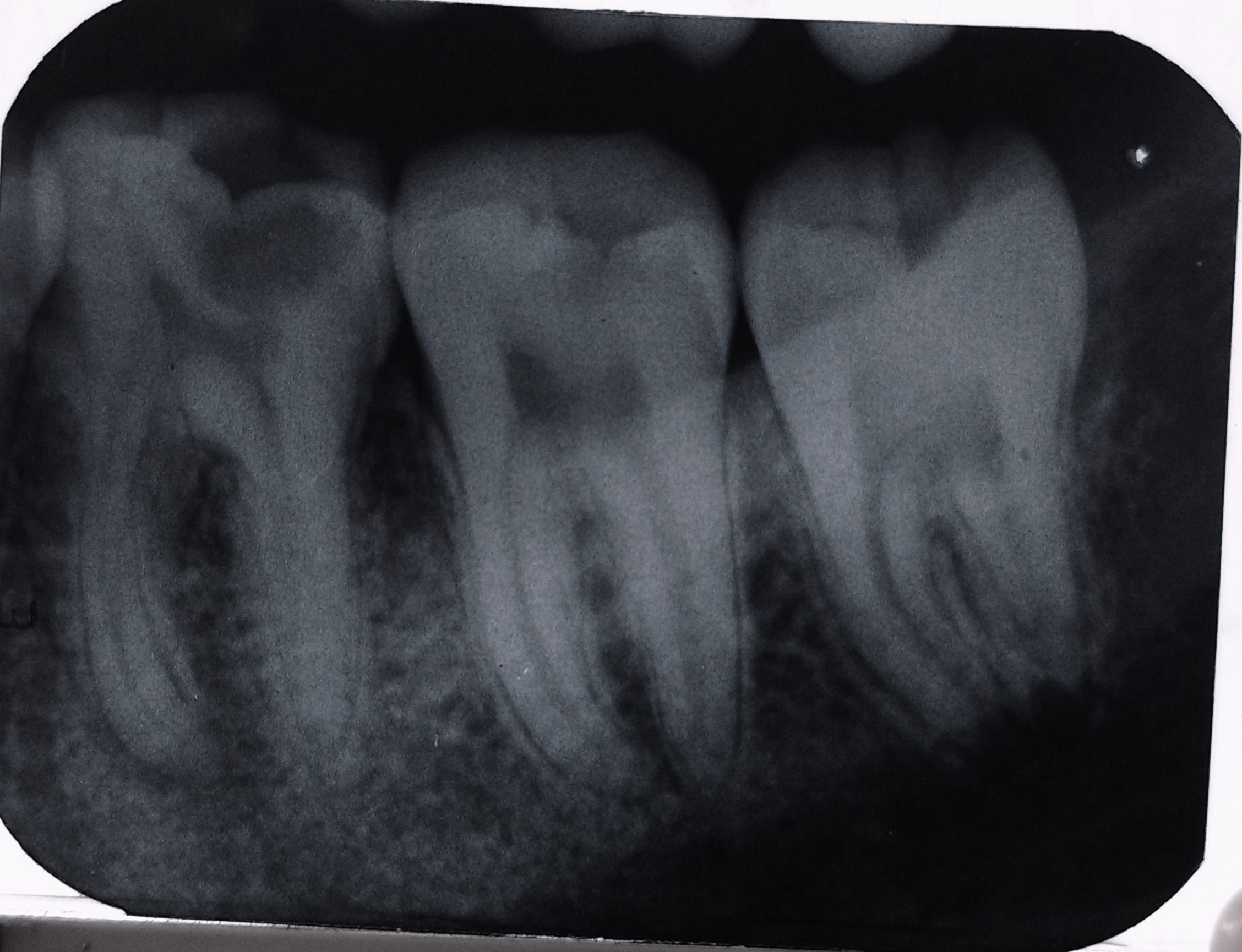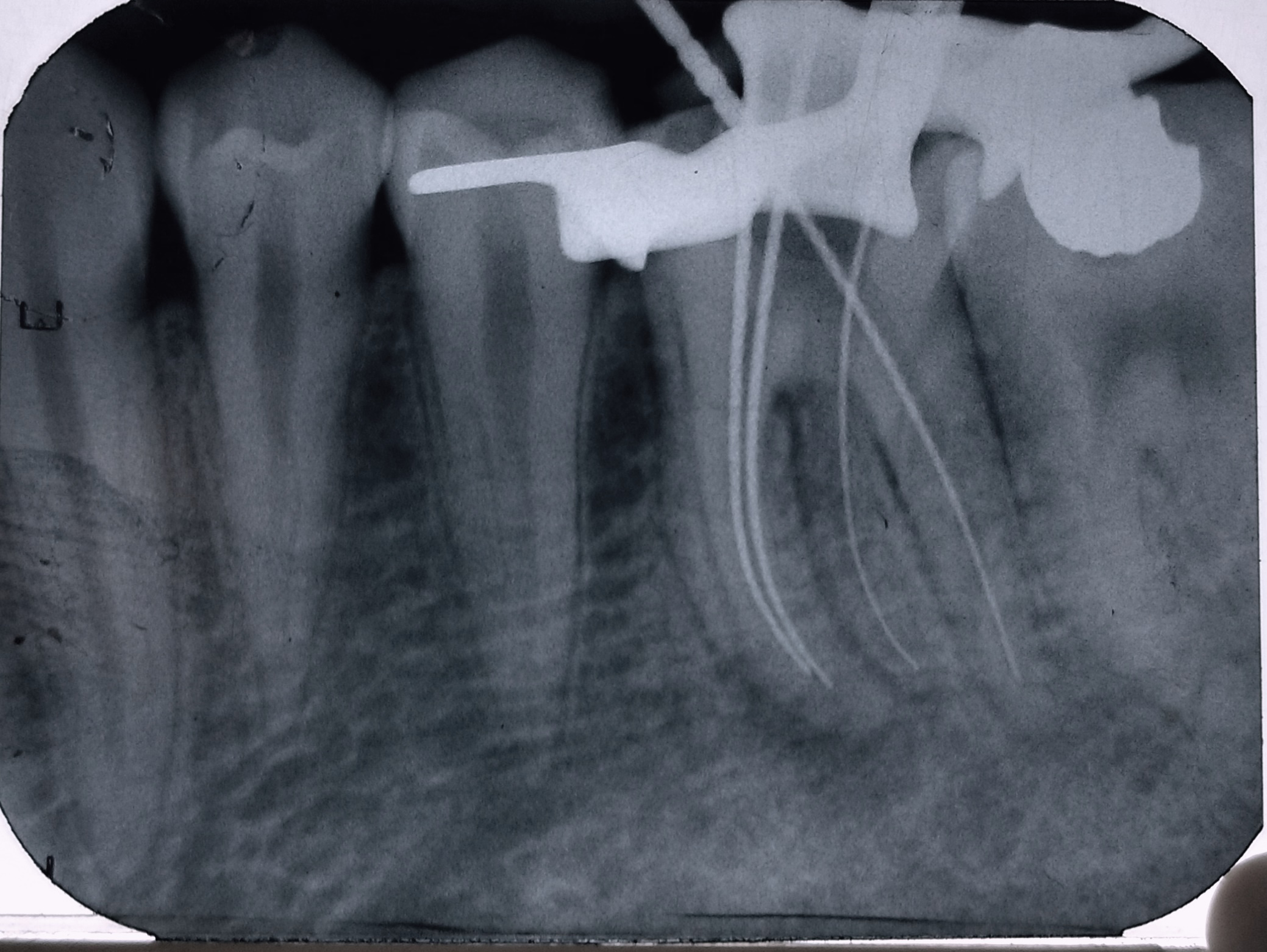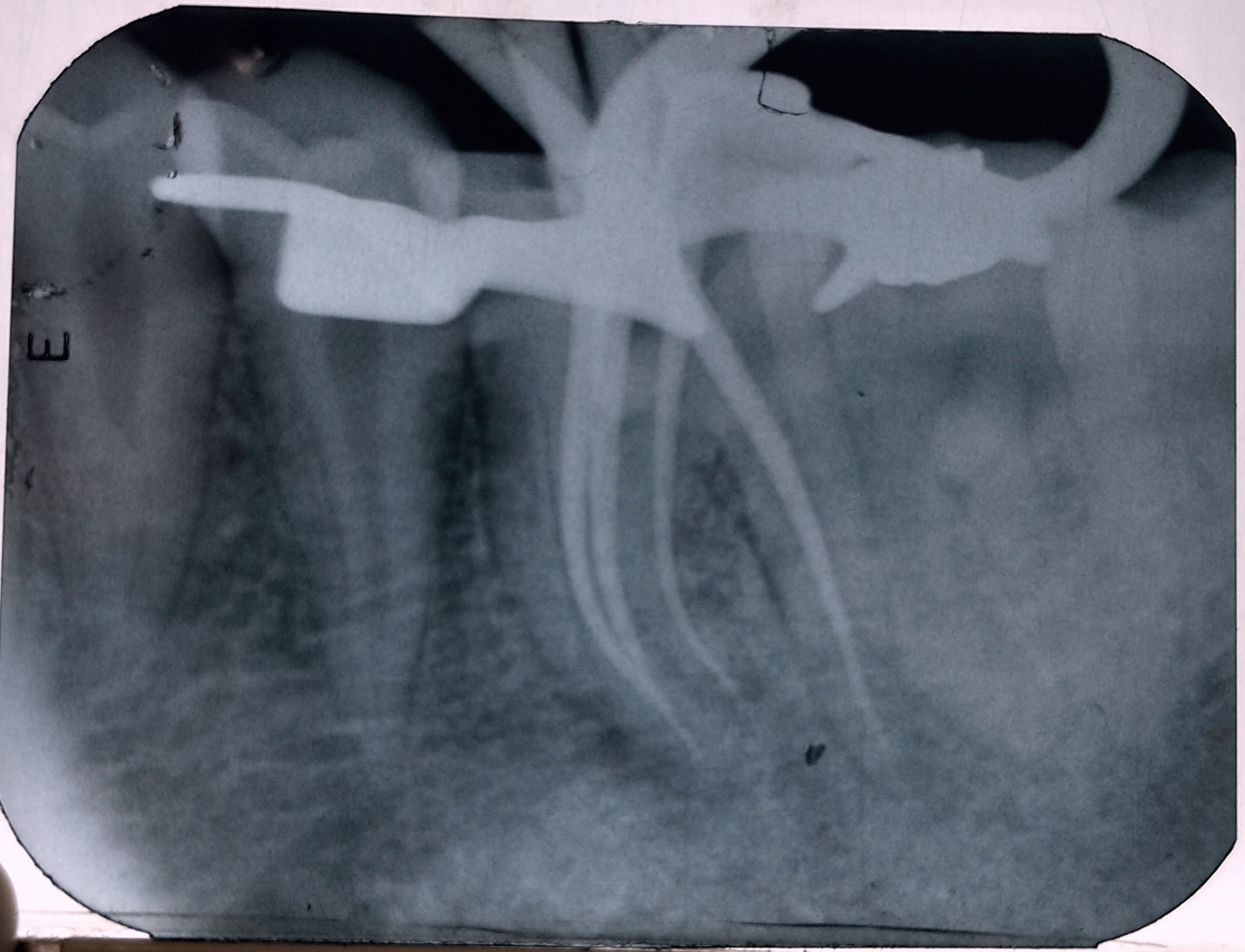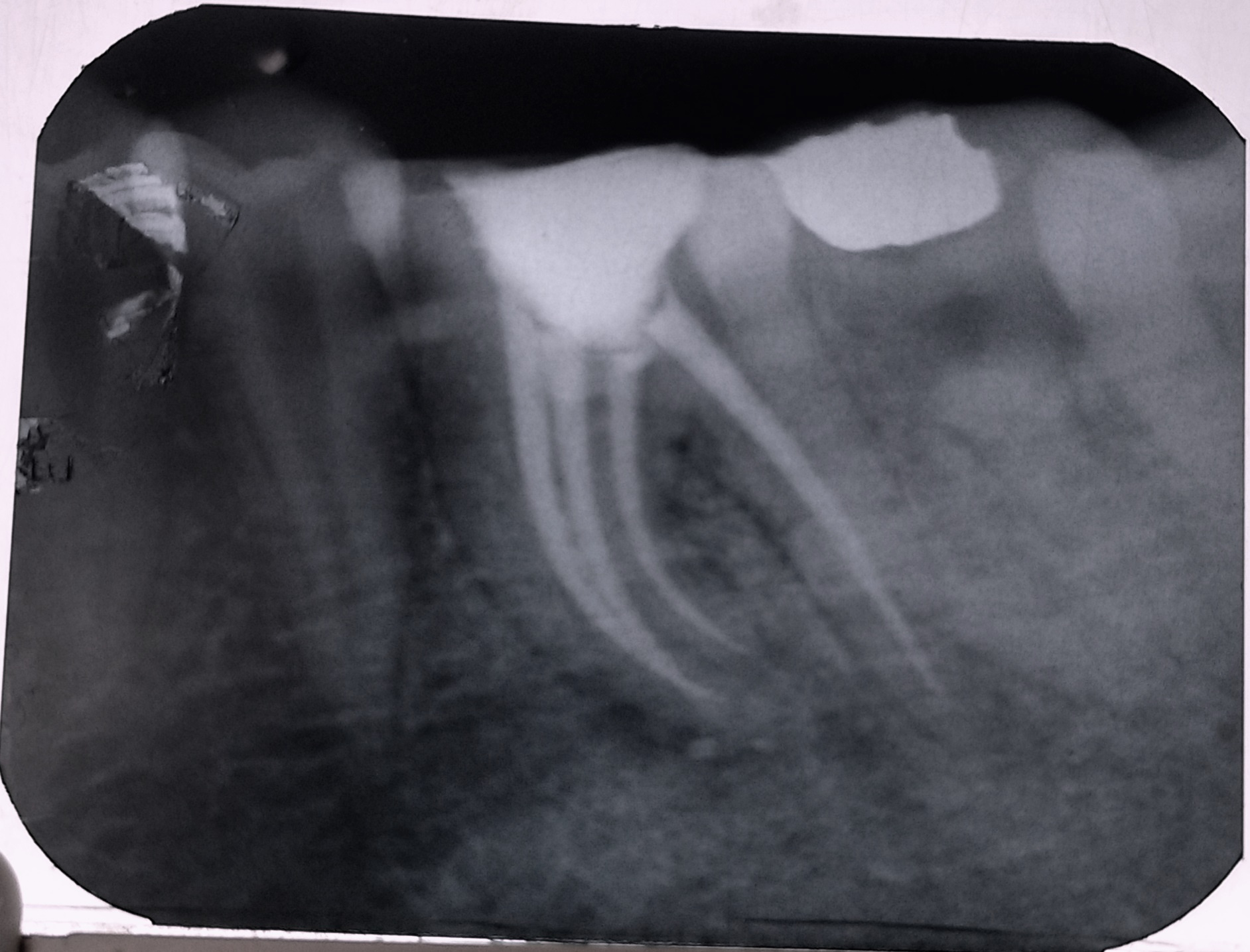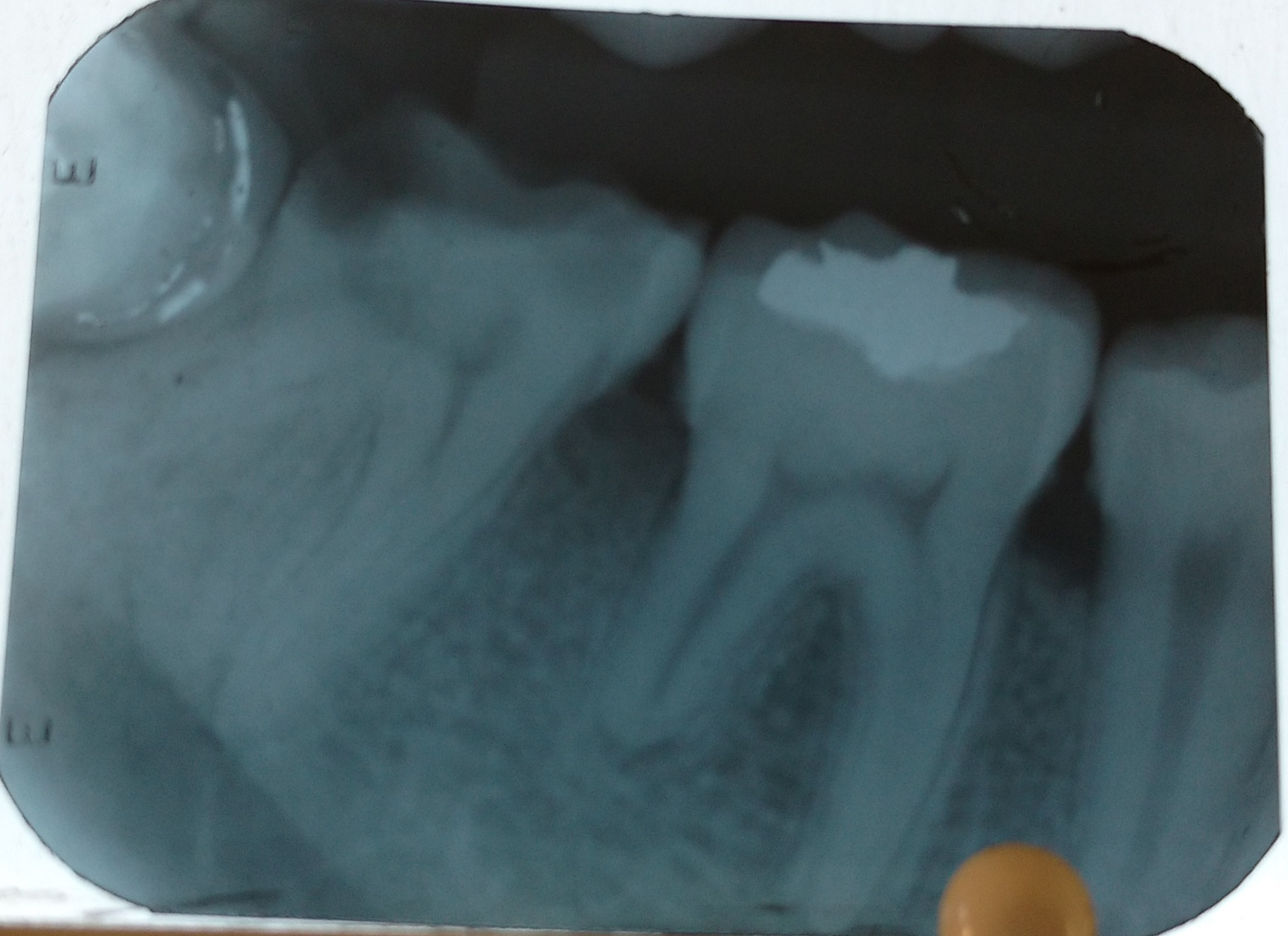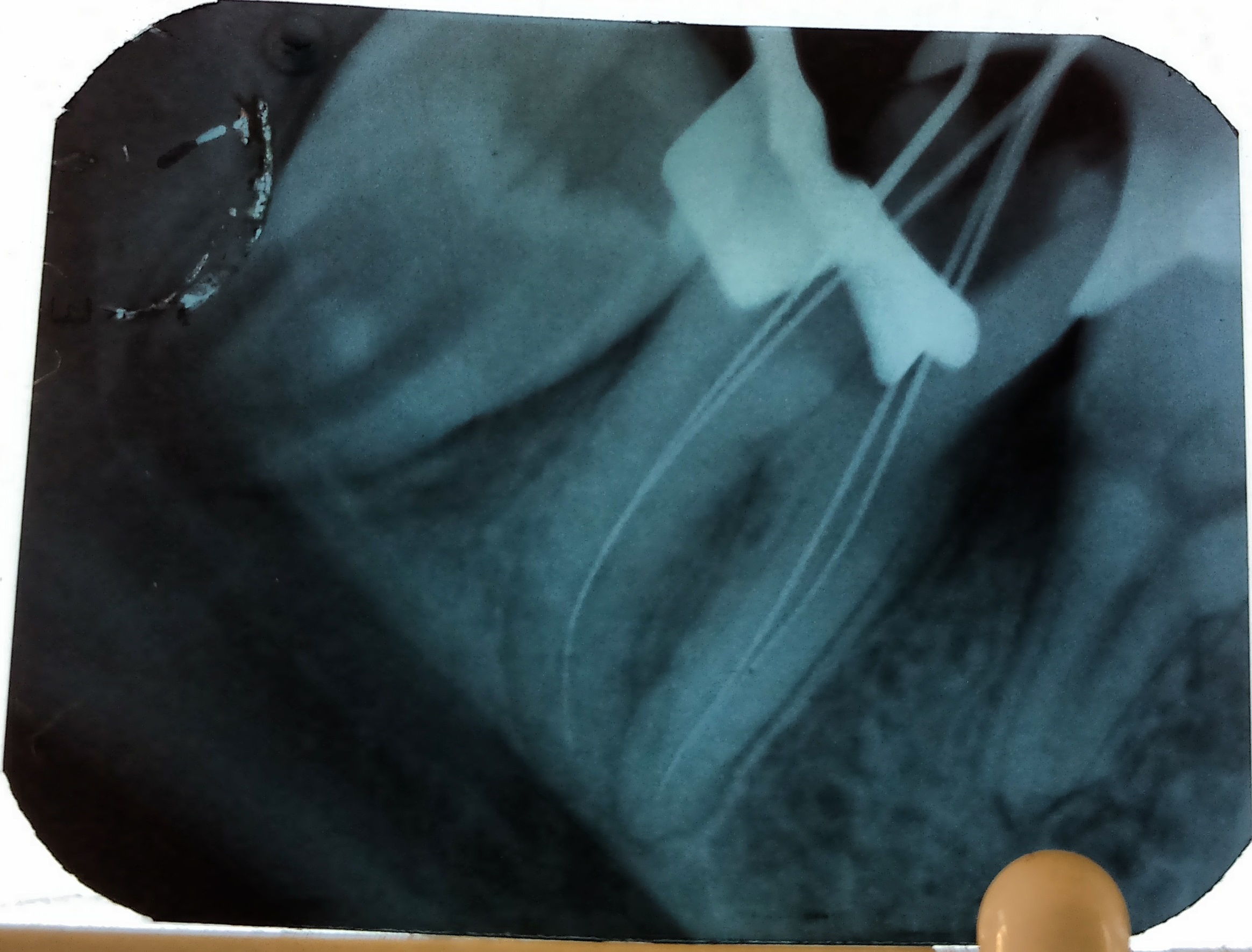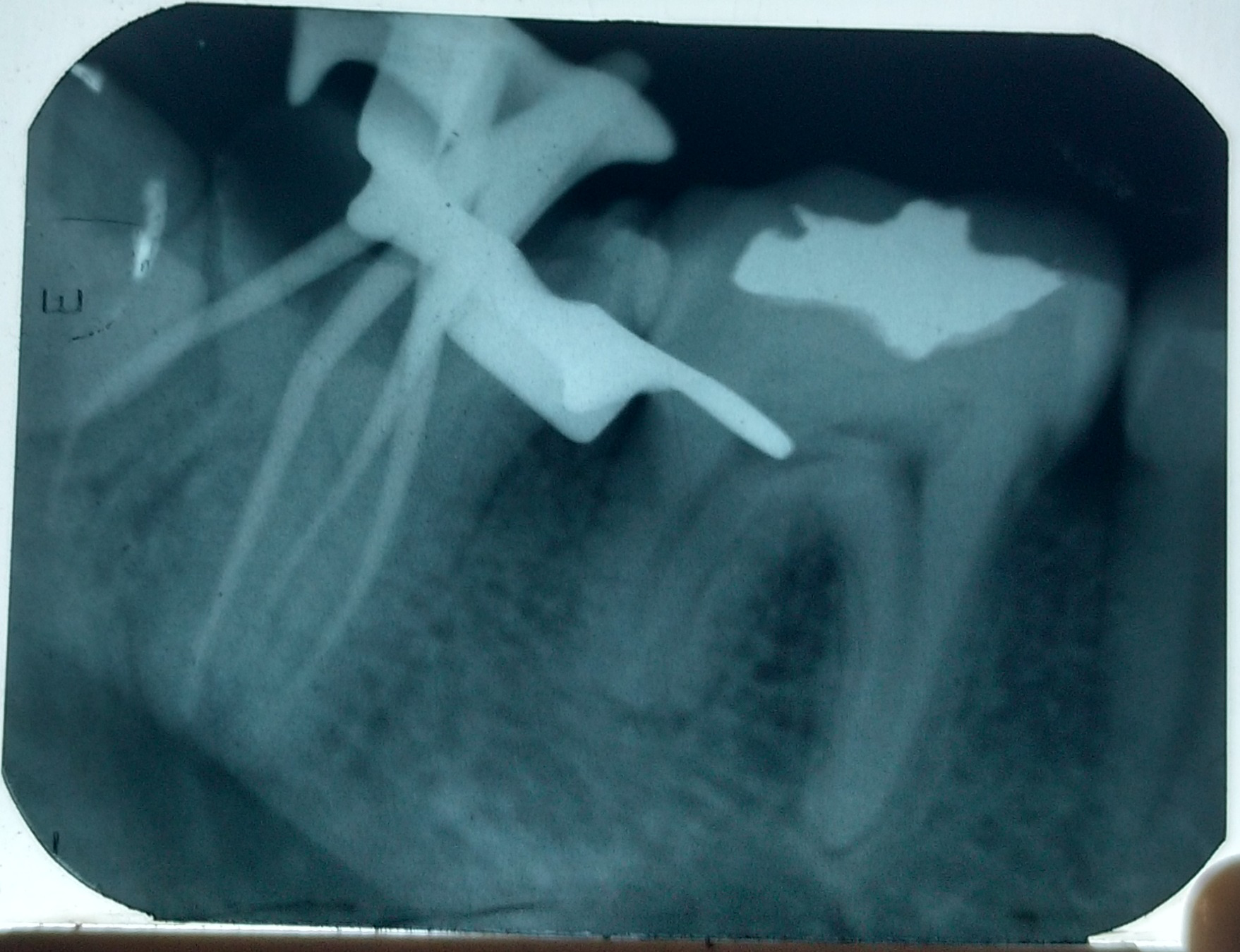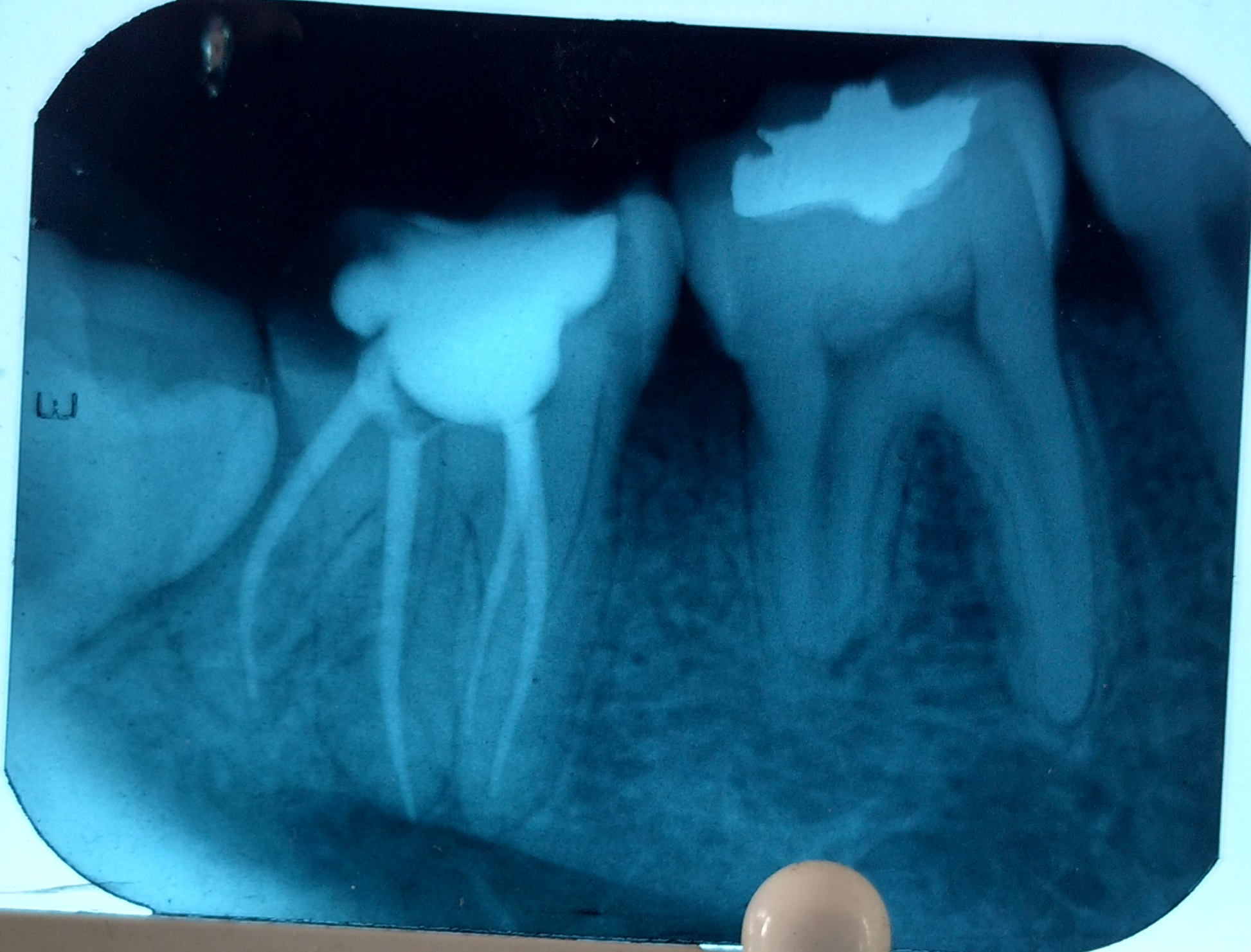Volume : 1 | Issue : 1
Case Report
Treating mandibular molars with extra roots -Radix entomolaris
Philip Pradeep,1 Gurudutt Nayak,2 Neha Arya3
1Department of Conservative Dentistry and Endodontics, Penang International Dental College, Malaysia
2Department of Conservative Dentistry and Endodontics, Mansarovar Dental College & Hospital, India
3Department of Conservative Dentistry and Endodontics, Seema Dental College & Hospital, India
Received: May 30, 2018 | Published: June 05, 2018
Abstract
On occasion, the clinician will come across a mandibular molar with an extra root located either lingually (the radix entomolaris) or buccally (the radix paramolaris). On encountering such cases in the clinic, it is always better for the dentist to have a sound knowledge of the variant root canal morphology beforehand. This report deals with the management of radix entomolaris cases, which might leave the inexperienced clinician in a dilemma with respect to diagnosis and subsequent treatment.
Keywords: radix entomolaris, radix paramolaris, distolingual root
Introduction
Cleaning and shaping of the root canals plays a vital role in eliminating endodontic pathology. In order for endodontic therapy to be successful, it is better for the clinician to be aware of the presence of unusual root canal morphology.1 Anatomical variations of the mandibular molars have been reported time and again. Generally, the mesial root possesses two root canals, ending in two distinct apical foramina. In some cases, they merge together at the root tip to exit in a single foramen. On the other hand, the distal root typically portrays a single kidney-shaped root canal, although if the orifice is particularly narrow and round, a second distal canal may be present.2 Numerous anatomical variations of the mandibular first molar have been reported by Fabra-Campos,3,4 Bond5 (three mesial canals), and Stroner6 (three distal canals).
It is not just the root canals which show anatomic variations; in some cases the tooth may be found to have an extra root. An additional root located distolingually is called radix entomolaris (RE), and when located mesiobuccally is called radix paramolaris (RP).The Latin term RE was coined by Mihaly Lenhossek in 1922 to describe the supernumerary root on the lingual aspect of mandibular molars. Bolk in 1915 named it radix praemolarica, as he presumed only the mandibular first molars displayed such a variant. In the later years, this additional root was also found to occur on the mandibular second and third molars, and even on the first and second primary mandibular molars.
Some authors prefer to use the following terms, either separately or interchangeably with RE: distolingual root, distolingual extra root, additional distal root and extra distal root. When it comes to the second and third permanent mandibular molars, the RE may be located mesiolingually, or exactly midway between both main roots. Hence, the usage of the broad term RE over positional terms is that it covers all variants of this root and therefore applies to all types of mandibular molars.7
This typical morphological variant does seem to show a strong racial predilection. According to Tratman (1938), the frequency of occurrence is found to be less than 5% in Eurasian and Indian subgroups. The frequency is much higher in populations demonstrating Mongoloid traits, ranging from 5 to over 30%.1 In Caucasians, however, this percentage drops down to 3.2-4.2%. Table 1 shows studies carried out by various researchers to demonstrate the prevalence of extra canals in mandibular first molars.8 An RE can be found on the first, second and third mandibular molar, occurring least frequently on the second molar.9 Some studies report a bilateral occurrence of the RE from 50 to 67%.10,11
Author/year |
No. of teeth |
Percentage of four |
Method used |
|---|---|---|---|
Helm 1926 |
512 |
4 |
Vulcanite cast ofextracted teeth (in vitro) |
Griffin et al. 1969 |
203 |
27.5 |
Radiographs of endodontically treated teeth (in vitro) |
Skidmore & Bjorndal 1971 |
45 |
28.9 |
Polyester casting resin of extracted teeth (in vitro) |
Pinede & Kuttler 1972 |
300 |
27 |
Radiographs of extracted teeth (in vitro) |
Vertucci & Williams 1974 |
100 |
30_0 |
Extracted teeth (in vitro) |
Venda Voorde et al. 1975 |
136 |
31 |
Radiographs of endodontically treated teeth (in vivo) |
Hartwell & Bellizzi 1982 |
846 |
35.1 |
Radiographs of endodontically treated teeth (in vivo) |
Fabie-Campos 1385 |
145 |
47.6 |
Radiographs of endodontically treated teeth (in vivo) |
Walker 1988 |
100 |
45 |
Radiographic and visual clearing of extracted teeth (in vitro) |
Yew & Chan 1993 |
832 |
31.5 |
Radiographic and visual clearing of extracted teeth (in vitro) |
Zaatar et al. 1997 |
147 |
29.9 |
Radiographs of endodontically treated teeth (in vivo) |
Table 1 Incidence of mandibular first molars having four canals using different methods.
The present article describes the endodontic management of mandibular first and second molar with RE. The identification of this variation was done with the help of multi-angled radiographs.
Case report 1
A 20 year old male patient reported to the Department of Conservative Dentistry and Endodontics, Seema Dental College and Hospital, Rishikesh, India with a complaint of pain on chewing in the left lower back tooth region. On clinical examination there was deep occlusal decay in mandibular left first molar (tooth #36). Tooth showed lingering response on vitality testing, and was tender on percussion. Intra oral periapical radiograph revealed widening of periodontal ligament. This radiograph also showed that the tooth had an additional distolingual root (RE) (Figure 1). Diagnosis of symptomatic irreversible pulpitis with apical periodontitis was made and root canal treatment was initiated.
Local anesthesia (inferior alveolar nerve block) was administered. The tooth was isolated by a rubber dam, and then the access cavity was prepared with distolingual extension to provide proper access to distolingual canal. After finding orifices of the canal, a radiograph was taken to determine the working length of the canals with two instruments in mesial root and two instruments in the distal roots (Figure 2). Cleaning and shaping was performed using rotary ProTaper files (Dentsply, Maillefer, Ballaigues) in crown down manner. Apical preparation was done till size F2 ProTaper file. The canals were irrigated with 5.25% sodium hypochlorite during instrumentation and finally with normal saline. The canals were then dried with paper points. Master cone were selected and confirmed radiographically (Figure 3). Obturation was done by lateral condensation of gutta percha with Apexit root canal sealer (Figure 4). Endodontic access was restored with composite resin and the patient was recalled for follow up and full coverage crown.
Case report 2
A 21 year old male patient reported to the Department of Conservative Dentistry and Endodontics, Seema Dental College and Hospital, Rishikesh, India with a complaint of pain on chewing in the right lower back tooth region. On clinical examination there was deep occlusal and distal proximal decay in the mandibular right second molar (tooth # 47). Tooth showed lingering response on vitality testing, and was tender on percussion. Intra oral periapical radiograph revealed widening of periodontal ligament. This radiograph also showed that the tooth had an additional distolingual root (RE) (Figure 5). Diagnosis of symptomatic irreversible pulpitis with apical periodontitis was made and root canal treatment was initiated.
Local anesthesia (inferior alveolar nerve block) was administered. The tooth was isolated by a rubber dam, and then the access cavity was prepared with distolingual extension to provide proper access to distolingual canal. After finding orifices of the canal, a radiograph was taken to determine the working length of the canals with two instruments in mesial root and two instruments in the distal roots (Figure 6). Shaping and cleaning was performed using rotary ProTaper files (Dentsply, Maillefer, Ballaigues) in crown down manner. Apical preparation was done till size F2 ProTaper file. The canals were irrigated with 5.25% sodium hypochlorite during instrumentation and finally with normal saline. The canals were then dried with paper points. Master cone were selected and confirmed radiographically (Figure 7). Obturation was done by lateral condensation of gutta percha with AH Plus root canal sealer (Figure 8). Endodontic access was restored with composite resin and the patient was recalled for follow up and full coverage crown.
Discussion
Morphology of the RE
The RE is generally seen with its coronal third completely or partially fixed to the distal root. The RE shows morphological variations ranging from a short conical extension to a ‘mature’ root with normal length and root canal. In most cases the pulpal extension is radiographically visible. The RE is also found to be smaller than the distobuccal and mesial roots and can be found separate from, or partially fused with, the other roots. A classification by Carlsen and Alexandersen12 describes four different types of RE according to the location of the cervical part of the RE: types A, B, C and AC. Types A and B refer to a distally located cervical part of the RE with two normal and one normal distal root components, respectively. Type C refers to a mesially located cervical part, while type AC refers to a central location, between the distal and mesial root components.
The RE has been shown to portray a moderate to severe mesial or distal inclination in the apical two thirds of the root. The root may also be straight or curved to the lingual. Based on the curvature of the separate RE variants, De Moor et al.13 has classified it into 3 variants. Type I refers to a straight root/root canal, while type II refers to an initially curved entrance which continues as a straight root/root canal. Type III refers to an initial curve in the coronal third of the root canal and a second curve beginning in the middle and continuing to the apical third.
Clinical approach
In order to improve the prognosis of endodontic therapy, it is absolutely essential to accurately identify and treat the supernumerary root. In most cases, the location of the distobuccal root and the RE are found to be in the same plane, resulting in superimposition of the roots in the two-dimensional pre-operative X-Ray. A thorough inspection of the preoperative radiograph, and interpretation of particular marks or characteristics, such as an unclear view or outline of the distal root contour or the root canal, can indicate the presence of a ‘hidden’ RE. It is also always advisable to shoot multiple IOPA radiographs from different angulations, before the onset of treatment. Apart from radiographical diagnosis, clinical inspection of the tooth crown and analysis of the cervical morphology of the roots by means of periodontal probing can facilitate identification of an additional root. An extra cusp (tuberculum paramolare) or more prominent occlusal distal or distolingual lobe, in combination with a cervical prominence or convexity, can indicate the presence of an additional root. It is always better to diagnose the presence of an extra root before initiation of endodontic treatment, as one knows what to expect or where to look once the pulp chamber has been opened.1
The orifice of the RE is located disto- to mesiolingually from the main canal or canals in the distal root. To better negotiate this anatomic variance, the access opening has to be modified from the traditional triangular cavity to a more rectangular or trapezoidal outline form. If the RE orifice is not clearly visible after removal of the pulp chamber roof, it is necessary to inspect the pulpal wall and floor in the distolingual region. Visual aids such as loupes, intra-oral camera or dental microscope can, in this respect, be useful. The dentinal map can aide in locating the RE canal orifice with considerable precision. The endodontic explorer is also of great use when it comes to locating the extra canal, especially if it is still buried under dentin or pulpal roof remnants. The access cavity should be refined accordingly, to aid in canal negotiation and achieving straight line access. However, to avoid perforation or stripping in the coronal third of a severe curved root, care should be taken not to remove an excessive amount of dentin on the lingual side of the cavity and orifice of the RE.
A severe root inclination or canal curvature, particularly in the apical third of the root (as in a type III RE), can cause procedural errors such as straightening of the root canal or a ledge, with root canal transportation, resulting in the loss of working length. The use of flexible nickel-titanium rotary files allows a more centered preparation shape with restricted enlargement of the coronal canal third and orifice relocation. However, endodontic mishaps such as instrument separation do take place, and are more likely to happen in an RE with severe curvature or narrow root canals. To avoid or minimize such incidents, achieving a glide path following apical scouting using small files (size 10 or less), along with accurate canal working length and curvature determination is to be focused on.1
Conclusion
It is absolutely essential to locate and treat all canals during endodontic treatment. Multiple X-rays shot from different angulations help to interpret and identify any root canal variations, if present. The conventional triangular shaped access cavity opening for a mandibular molar must be altered to a trapezoidal form in order to properly negotiate and treat the extra root canal. Due to the curvature seen in majority of radices, a straight line access and glide path must be achieved, in order to enhance one’s ability to properly clean, shape and obturate the canal.
Acknowledgements
None.
Conflict of interest
The authors declare no conflict of interest.
Reference
- Calberson FL, De Moor RJ, Deroose CA, et al. The Radix Entomolaris and Paramolaris: Clinical Approach in Endodontics. J Endod. 2007;33(1):58–63.
- Thoden Van Velzen SK, Wesselink PR, De Cleen MJH. Endodontologie. 2nd ed. Houtem/Diegem: Bohn Stafleu Van Loghum; 1995;142–3.
- Fabra-Campos H. Unusual root anatomy of mandibular first molars. J Endod.1985;11:568 –57.
- Fabra-Campos H. Three canals in the mesial root of mandibular first permanentmolars: a clinical study. Int Endod J. 1989;22(1):39–43.
- Bond JL, Hartwell RG, Donnelly JC. Clinical management of middle mesial root canals in mandibular molars. J Endod. 1988;14(6):312–4.
- Stroner WF. Mandibular first molar with three distal canals. Oral Surg. 1984;57:554–7.
- Stamfelj I. Who coined the term radix entomolaris? Int Endod J. 2014;47:810–811.
- S Al-Nazhan. Incidence of four canals in root canal treated mandibular first molars in a Saudi Arabian sub population. Int Endod J. 1999;32(1):49–52.
- Visser JB. Beitragzur Kenntnis der menschlichenZ ahnwurzelformen. Hilversum: Rotting 1948;49–72.
- Steelman R. Incidence of an accessory distal root on mandibular first permanent molars in Hispanic children. J Dent Child. 1986;53(2):122–3.
- Yew SC, Chan K. A retrospective study of endodontically treated mandibular first molars in a Chinese population. J Endod. 1993;19(9):471–3.
- Carlsen O, Alexandersen V. Radix entomolaris: identification and morphology. Scan J Dent Res. 1990;98:363–73.
- De Moor RJ, Deroose CA, Calberson FL. The radix entomolaris in mandibular first molars: an endodontic challenge. Int Endod J. 2004;37(11):789 –99.
